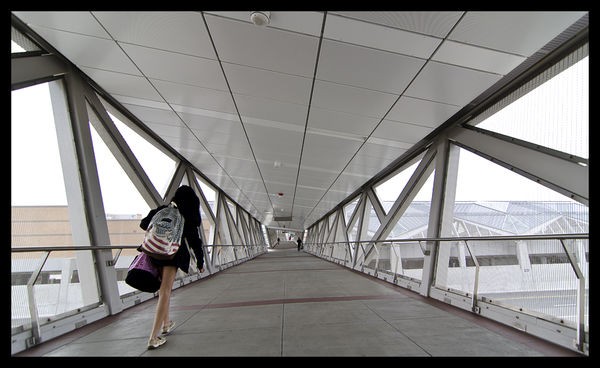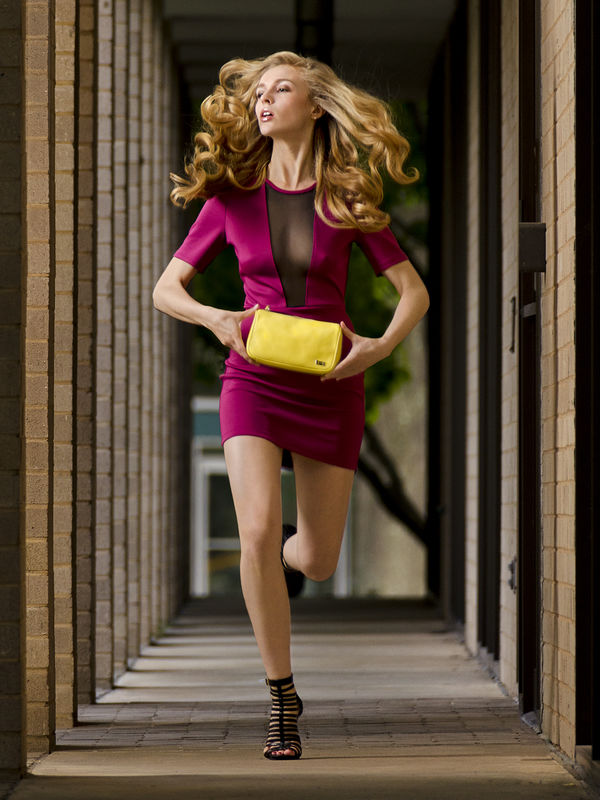Focal Length and Perspective.
Apr 6, 2021 08:08:32 #
Leitz wrote:
Over the years I have observed more explanations than questions about perspective. However, I've had little to do with inexperienced photographers, which may be why I've not seen much misunderstanding.
Were you not, long ago, an inexperienced photographer - full time?

Apr 6, 2021 08:29:00 #
Leitz wrote:
Over the years I have observed more explanations than questions about perspective.....
Whenever there's questions there's a need for good explanations. Maybe the reason why it's a recurring question is because there's been a lack of good explanations.
You seem to be suggesting that there's something inappropriate about me offering my own version of an explanation. If the subject is boring you or doesn't hold any interest for you, find another thread.
Apr 6, 2021 09:05:19 #
Ah, if only we still had a resident gas bag with dubious credentials to argue and explain with circles and arrows how changing focal length changes perspective... and what fools are those that think otherwise.
Apr 6, 2021 09:27:02 #
Leitz
Loc: Solms
R.G. wrote:
Whenever there's questions there's a need for good explanations. Maybe the reason why it's a recurring question is because there's been a lack of good explanations.
You seem to be suggesting that there's something inappropriate about me offering my own version of an explanation. If the subject is boring you or doesn't hold any interest for you, find another thread.
You seem to be suggesting that there's something inappropriate about me offering my own version of an explanation. If the subject is boring you or doesn't hold any interest for you, find another thread.
In fact, I find providing answers in search of a question to be quite amusing!
Apr 6, 2021 09:37:23 #
This probably is not directly on target, but a good example of how a lens can alter things, perspective?, use a fish eye lens for a photo of a room. We once checked out a condo in CO shot this way. Entire open area was shown, but real dimensions were nothing like photo made them appear.
Apr 6, 2021 09:37:54 #
Leitz wrote:
In fact, I find providing answers in search of a question to be quite amusing!
If you think that's what's happening in this thread, you're wrong. And if you think there aren't misunderstandings to be cleared up, you're wrong.
Apr 6, 2021 09:47:27 #
JBRIII wrote:
.....real dimensions were nothing like photo made them appear.
That misleading impression was down to a single phenomenon. It was because of how much the wide angle lens was showing you. If you take lens distortion out of the equation you will be able to crop down to any part of those photos and you would see that they are geometrically correct. Lenses like that mess with our perception of distance but they don't affect perspective. They are, however, prone to distortion.
Apr 6, 2021 09:49:38 #
R.G. I actually truly enjoyed your eloquent dissertation on “Focal Length and Perspective”… A rather interesting reflection on an oft misunderstood quandary especially by those who do not have a background (or academic training) in the “Art of Illustration” I’m certain the graduates of the Edinburgh College of Art “Get This”
Below are examples of my journey into “Focal Length and Perspective” in long hallways, one of my favs!
The first is at 16mm FL i.e. the wide end of spectrum using “Vanishing Point Perspective” a ploy and oft used tool of the masters of antiquity… the second is the use of “Focal Length Compression” with a 450mm FL in a series for an agency model’s portfolio. In both scenarios the “Hallway” length is virtually identical (I paced both hallways).
We as photographers (like the master painters of centuries ago) are restricted to working in a two dimensional space a.k.a. and X and Y axis… However in the real world the Z axis of the Cartesian coordinate system comes into play. There in lays the paradox… R.G. I encourage you to study the art and craft of “Optical Illusion”. Possibly then I trust you may gain yet another formidable tool for your craft.
Again many thanks R.G. and all the best on your epic journey.
.
Below are examples of my journey into “Focal Length and Perspective” in long hallways, one of my favs!
The first is at 16mm FL i.e. the wide end of spectrum using “Vanishing Point Perspective” a ploy and oft used tool of the masters of antiquity… the second is the use of “Focal Length Compression” with a 450mm FL in a series for an agency model’s portfolio. In both scenarios the “Hallway” length is virtually identical (I paced both hallways).
We as photographers (like the master painters of centuries ago) are restricted to working in a two dimensional space a.k.a. and X and Y axis… However in the real world the Z axis of the Cartesian coordinate system comes into play. There in lays the paradox… R.G. I encourage you to study the art and craft of “Optical Illusion”. Possibly then I trust you may gain yet another formidable tool for your craft.
Again many thanks R.G. and all the best on your epic journey.
.
Apr 6, 2021 09:56:08 #
Thomas902 wrote:
R.G. I actually truly enjoyed your eloquent disser... (show quote)
There is nothing like a beautiful woman running
 Fine shooting
Fine shooting 


Apr 6, 2021 10:04:29 #
R.G. wrote:
Part of the problem with this subject is the undef... (show quote)
Title is wrong so it’s not worth reading a post that is waaaaaay too long. IOW I barely skimmed it.
I notice the remark that perspective is not easy to define. If true, so what ? The real problem is the title and therefore the theme of your question.
There is NO connection between FL and perspective ... regardless of how one defines perspective.
Perspective is governed ONLY by distance. FL affects ONLY field of view.
You have made a huuuuuge post that goes nowhere.
Apr 6, 2021 10:17:52 #
Thomas902 wrote:
R.G. I actually truly enjoyed your eloquent disser... (show quote)
Thank you Thomas. Glad you enjoyed. We hear much about the compression effect of telephoto lenses but nothing about the opposite - the extension effect of wide angle lenses (not in those terms anyway). I wonder if it would be fair to say that a FL of 43mm on a FF camera represents the crossover point from compression to extension. It's a very gradual shift, so there's much room for arguing the case of various focal lengths in that range.
Thanks for posting your cool examples. I have used zoom in the past to bring the background closer in some of my landscape shots. At the time I wouldn't have used the term "compression" - I'd probably have described it in terms of getting the framing that I wanted. Sometimes with landscape shots you have to choose a specific section of the background and then use an appropriate mixture of zoom and positioning to get the foreground and mid-field into proper alignment. In that situation it's appropriate to refer to perspective because it does involve finding the right position to take the shot from.
Apr 6, 2021 10:36:24 #
User ID wrote:
Title is wrong so it’s not worth reading a post that is waaaaaay too long. IOW I barely skimmed it.
I notice the remark that perspective is not easy to define. If true, so what ? The real problem is the title and therefore the theme of your question.
There is NO connection between FL and perspective ... regardless of how one defines perspective.
Perspective is governed ONLY by distance. FL affects ONLY field of view.
You have made a huuuuuge post that goes nowhere.
I notice the remark that perspective is not easy to define. If true, so what ? The real problem is the title and therefore the theme of your question.
There is NO connection between FL and perspective ... regardless of how one defines perspective.
Perspective is governed ONLY by distance. FL affects ONLY field of view.
You have made a huuuuuge post that goes nowhere.
Apparently your skimming was so minimal that you are largely ignorant of the contents. If it's too much bother to base your comments on an actual knowledge of the contents, feel free to just keep going and find other threads to spend time with.
For a start, I didn't say that perspective was difficult to define - I said the problem was the undefined use of that term. Apart from that, the whole thread is a discussion about perspective and perception. The fact that perspective is governed only by distance (it's actually more accurate to say "position") is a recurring theme throughout the thread.
I'll repeat my suggestion that you find threads more to your liking (or threads that you can at least be bothered to read before you pass comment on them).
Apr 6, 2021 11:51:22 #
R.G. wrote:
Apparently your skimming was so minimal that you a... (show quote)
I refer you back to your thread title.
Apr 6, 2021 12:12:33 #
User ID wrote:
I refer you back to your thread title.
I refer you back to the contents of the thread.
Apr 6, 2021 13:09:53 #
Picture Taker
Loc: Michigan Thumb
Perspective is in the eye of the picture taker (photographer). The adjustment is in his control of his equipment and location (adjustments). All the details are mechanics.
If you want to reply, then register here. Registration is free and your account is created instantly, so you can post right away.






